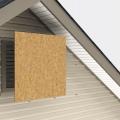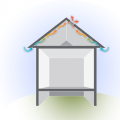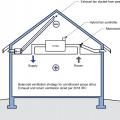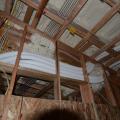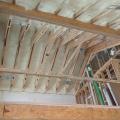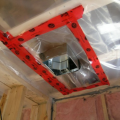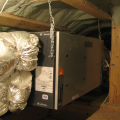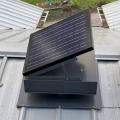Showing results 1 - 13 of 13
Attach a strong permanent cover to gable end vents before a severe storm strikes to prevent moisture intrusion.
Attic ventilation fans exhaust hot air from the attic while replacing it with cooler air from the outside through intake vents
Mold on the sheathing in this attic occurred after attic ventilation was increased
Right - The energy recovery ventilator ducts supply filtered outside air to multiple locations in the home and continuously exhaust stale air to provide clean, balanced ventilation.
Right – Open-cell spray foam is installed over closed-cell spray foam in this hybrid approach to achieve adequate attic ventilation while allowing some vapor permeability.
Right – Spray foam fills the roof joist cavities of this vaulted, unvented attic.
The polyethylene ceiling vapor barrier is sealed to form an air barrier around the exhaust fan in this very cold climate location (≥ CZ 6).
The spray foam-insulated attic provides a temperate place for the ERV ducts, which provide filtered fresh air to every room in the house.
This HRV, installed in a conditioned attic, provides balanced ventilation to the whole home
This solar powered attic fan runs when the sun is shining and does not draw any power from the home’s electrical system
Wrong - Exhaust fans should not have tight bends in duct work, especially right next to the fan as this can block airflow
Wrong – The open overhang with exposed timbers and unscreened vent holes make this roof more susceptible to ignition.
